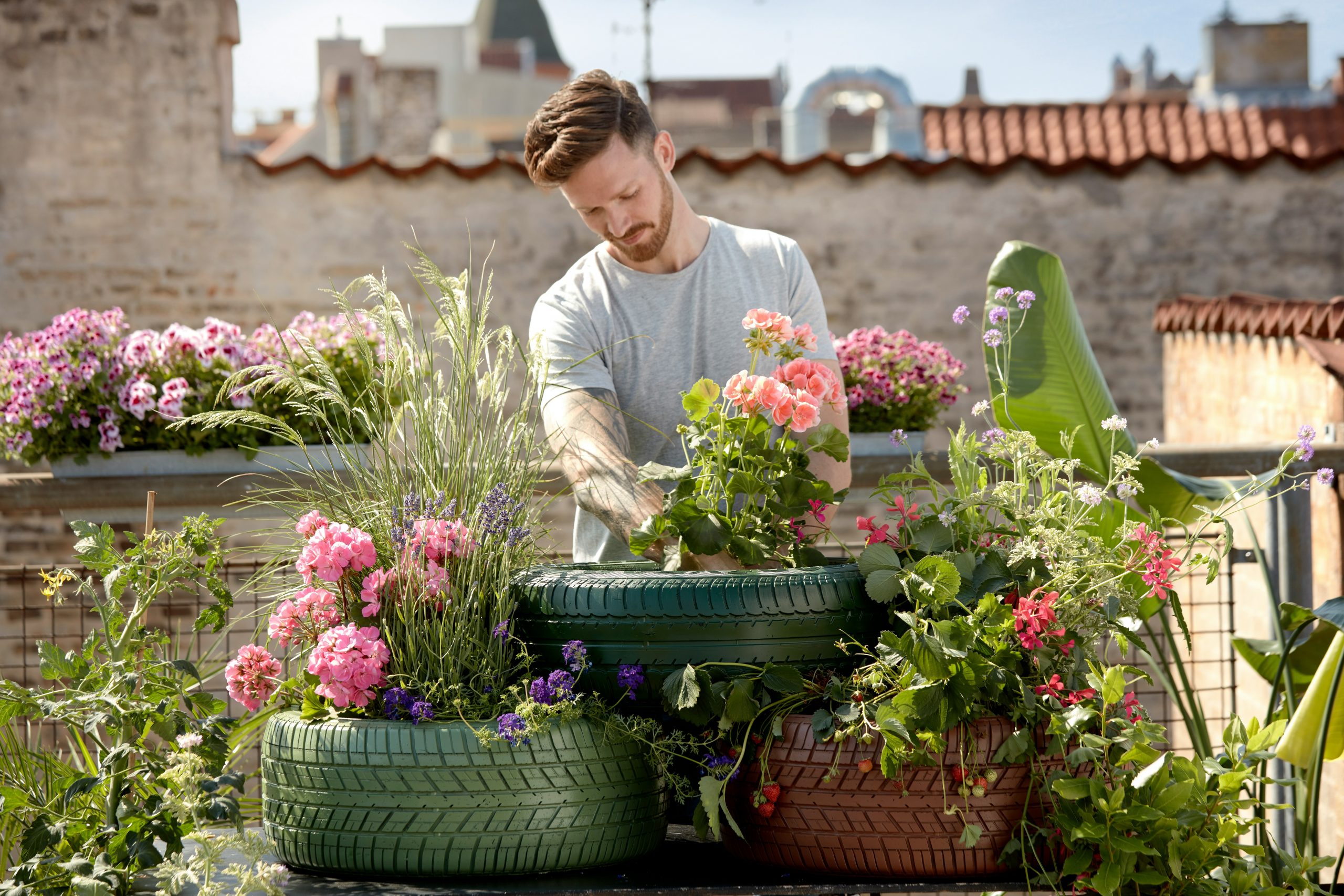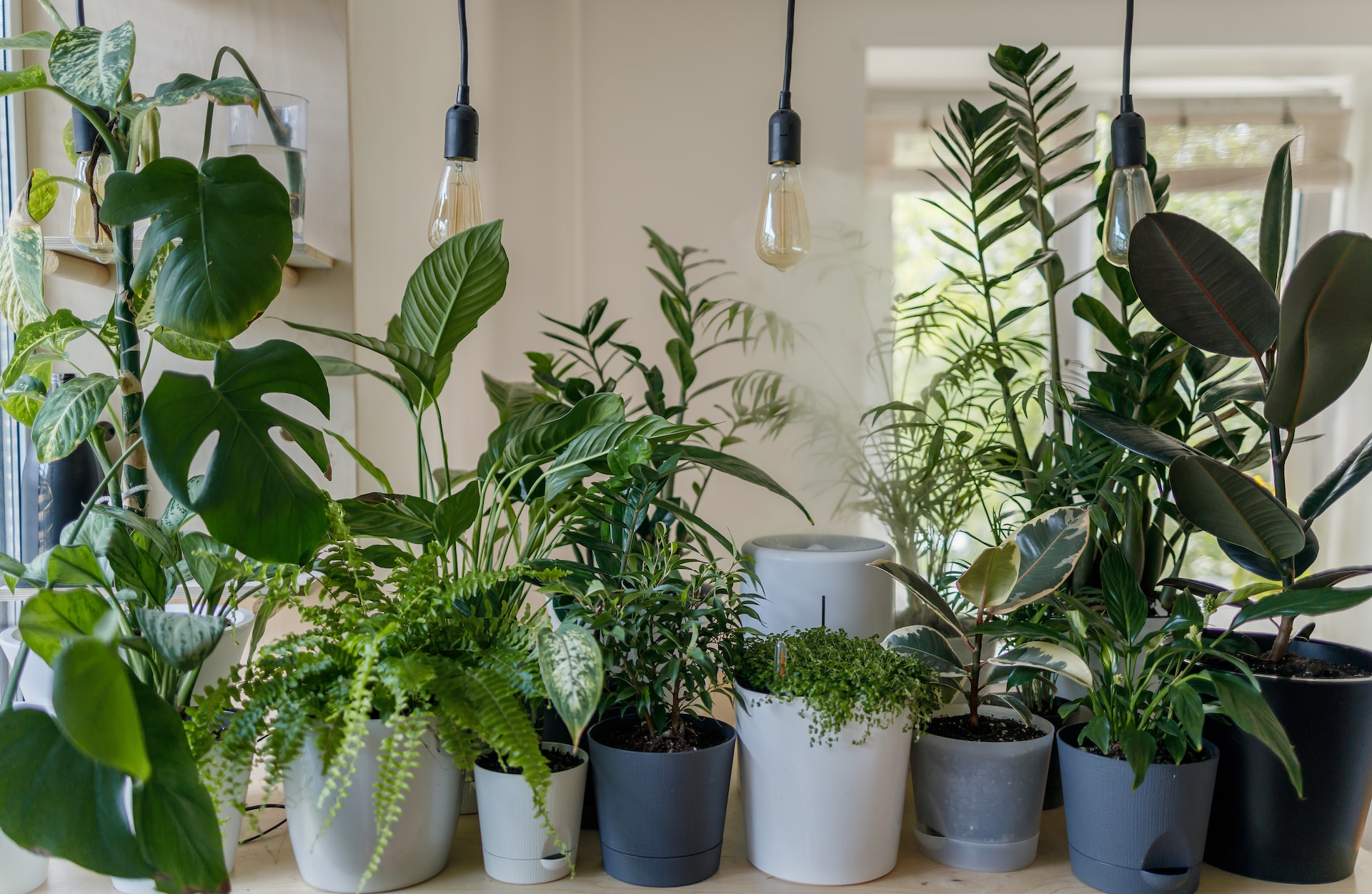Achieve a Stunning Summer Yard: Top 5 Tips for Saskatchewan Homeowners

Summer in Saskatchewan is a time to embrace the outdoors, enjoy the long days, and make the most of your beautiful yard. Whether you’re looking to enhance your curb appeal or create a relaxing outdoor oasis, these top five tips will help you achieve a gorgeous yard this summer.
1. Choose the Right Plants for Your Climate
Saskatchewan’s unique climate, with its hot summers and cold winters, requires selecting plants that can thrive in these conditions. Opt for native plants such as Prairie Coneflowers, Wild Bergamot, and Purple Prairie Clover. These plants are not only adapted to the local climate but also support local wildlife. Consider drought-resistant plants like succulents and ornamental grasses, which require less water and maintenance.
2. Invest in Quality Soil and Mulch
Healthy soil is the foundation of a beautiful yard. Invest in high-quality soil rich in organic matter to give your plants the nutrients they need. Adding compost can improve soil structure, water retention, and fertility. Mulch is another essential component. It helps retain moisture, suppress weeds, and regulate soil temperature. Organic mulches like wood chips or straw are excellent choices for flower beds and vegetable gardens.
3. Water Wisely
Watering your yard efficiently is crucial during the hot summer months. Water early in the morning or late in the evening to reduce evaporation and ensure your plants get the moisture they need. Consider installing a drip irrigation system or soaker hoses to deliver water directly to the roots, minimizing waste. Also, remember to water deeply but less frequently to encourage deep root growth, making your plants more drought-resistant.
4. Create Outdoor Living Spaces
Transform your yard into an extension of your living space by creating inviting outdoor areas. Add comfortable seating, a dining area, or a fire pit to enjoy warm summer evenings. Incorporate elements like pergolas or shade sails to provide relief from the sun. Use outdoor rugs, cushions, and lighting to create a cozy and stylish atmosphere. These additions enhance your enjoyment of the yard but and increase your property’s value.
5. Maintain Regularly
Consistent maintenance is key to keeping your yard looking its best. Mow the lawn regularly, but avoid cutting it too short to prevent stress and encourage healthy growth. Trim and prune shrubs, trees, and flowers to maintain their shape and promote blooming. Look for pests and diseases, and address any issues promptly. Regularly clean and organize outdoor spaces to keep them inviting and functional.
A gorgeous yard is within reach with these simple yet effective tips. Embrace the beauty of Saskatchewan’s summer and transform your outdoor space into a haven of beauty and relaxation. Whether you’re looking to boost your curb appeal or create a personal retreat, these strategies will help you make the most of your yard. Happy gardening!
9 Tips to Keep Houseplants in Winter

Plants are excellent stress relief, and the leafy greenery will brighten anyone’s mood. Winter is a time for staying inside, being cozy and hibernating. Plants also enjoy hibernating and resting in these months. Here are a few tips to take care of house plants over winter to not shock their system.
Cut Back on Watering
Consider watering less frequently depending on your home’s climate and sunlight conditions. However, plants might need the same amount of water if your plants are near heating vents or your home is warmer in winter than summer.
Instead of following a weekly watering schedule, poke the first inch of soil with your finger to check if it is dry or wet, and then proceed with watering. Always plan to under water plants even in winter. You can’t take back water once it is soaked in.
Pay Attention to Sunlight
The seasons change, as does the amount of sunlight plants receive. Think about moving plants to different locations in your home for the best dose of sunlight. If that is impossible, get a grow light from your local garden store! Also, make sure plants on window sills aren’t getting cold drafts. Consider moving them to a different location if they are. To ensure plants grow evenly, quarter-turn them once weekly for a well-balanced plant. I admit I never do that, and my plants are growing lopsided.
Don’t Worry About a Few Dropped Leaves
Winter often brings about cold drafts, and turning the furnace on can change your home’s conditions. Sometimes, the more demanding plants will drop leaves—try not to worry about it too much, as new leaves will grow in their place or above it! Leaves falling just means a plant is preparing for lower light levels.
Avoid Temperature Extremes
Average household temperatures are usually perfect for most plants. Outside air from doors opening and closing can affect plants, so ensure your plants are far away from doors. Also, keep plants away from heating vents and radiators. Sudden changes in heat can negatively affect them too.
Cut Back on Fertilizer
Fertilizing is still great to use in winter. Instead of using it weekly, switch to bi-weekly or even monthly. Another great alternative to fertilizer is Marphyl organic fertilizer. It’s more about providing nutrients to the soil and less about enhancing plant growth. You may stop fertilizing altogether if you think your plants aren’t getting as much sun.
Keep an Eye Out for Pests
Pests will start to spring up in winter, and most enjoy warm, dry soil conditions. Check plants’ leaves, and underneath the leaves every time you water for signs of pests. Some common pests are gnats, scales, and spider mites. Gnats are easy to get rid of with high-quality cinnamon sprinkled on top of the soil. Scale is more challenging to get rid of, and you will want to alcohol swab each brown spot to remove them. The best defence against spider mites is to buy predatory spical mites, microscopic bugs that eat the spider mites and will not harm your plants. Insecticides can also treat pests, but from experience, using them multiple times can damage the plant.
Up the Humidity
Most house plants are of the tropical variety, and the tropics often have high humidity. Consider purchasing a humidifier for the colder months to offset the dryness of your home. Not only will you breathe better, but your plants will too! The second way to keep the humidity up is to cluster plants together. The third way is to put water-filled pebble trays under your plants that require it and/or mist your plants. Before misting them, research to see if they do well with wet leaves. For example, philodendrons, some hoya and calathea (prayer plants) don’t mind if their leaves are wet.
Dust Your Plants
The leaves on a plant use the sun for photosynthesis and air circulation. If the leaves are coated in dust and debris, it makes the plant work a lot harder to live. Use a dry microfiber cloth to dust them gently, top and bottom. A wet cloth works too, but it might re-attract dust.
Resist the Urge to Re-Pot
In winter, plants go dormant and rest. It is best not to disturb them by re-potting them. The shock of re-potting can lead to stunted growth or loss of foliage—wait to re-pot during growth spurts like in spring and summer.
I hope you found these few tips helpful to keep your plants healthy and happy over winter. When in doubt, under water, fertilize less and ensure your plants get as much sun as possible, naturally or through a grow light.
Are you looking for a home this winter? Contact your local REALTOR® today!
How to Build the Perfect Snowman

Making a snow person was my favourite pastime when I was a kid. I used to create families of snow people, including pets, and a home for them to live in. There is a bit of science behind the snow consistency and the success rate of building the perfect snowman.
The Right Snow
Proper snow consistency is key to making a snowman. Look for dense, wet snow that falls or is already on the ground on a warmer day. Stay away from cold days or blizzards like snow falls for snow person building—nobody wants to be out there anyways.
Location, Location, Location
Make sure you find a perfect location for your snowman to show it off. When I was a kid, I used to build my snow person in front of our living room window, so I could gaze upon it and say hello! The best spot to build a snowman for longevity is in a shaded part of your yard and/or in the center area where you roll your snowballs.
Best Structure
Build your snow person like a “pyramid” with a large ball at the bottom. Medium-sized for the tummy and a smaller one for the head! The smaller the snowman, the more structure it will have. As you increase the size, it becomes less stable. Once in a while I would make a 6ft snowman with the help of my dad or grandpa to add the finishing touches.
Rolling it Up
Start by making a larger-than-average snow ball (you know, the kind you throw at someone)…then start rolling it around in the snow and watch it magically become larger. Roll it around until you can’t physically push it anymore or until you are happy with the size. Once the main snowball is ready, pack snow around the base to make it extra secure to the ground.
Flatten Each Ball
While rolling each ball, make sure you stop from time to time to pack it down and ensure it’s a solid ball. Remember to do this for building the actual snow person—pat down a flat area between each ball to strengthen the structure.
The Perfect Accessories
My mom always had an old box of too-small hats and gloves for us to use for our snow person. That way, if they blew away or someone needed it, we wouldn’t be sad to let them go. We also had a gravel driveway that provided many rocks for the snowman’s eyes, nose, and buttons—and a garden for a carrot for the nose. Deer would often come into the yard and eat the nose!
If you are going for a certain aesthetic, try matching the snow person to the scheme of your home or outside decor. Try an ugly sweater on it or an old jacket for an extra bit of whimsy. Don’t forget to add branches for the arms!
Building a snow person or a snow family is a lot of fun for the whole family or alone. Plus, being outside is a great way to boost your mood and get active.
Contact your Local REALTOR® today to find the perfect home and yard to build a snow person in.
Surviving Winter Blues

Here in Saskatchewan, winter is a drag, the snow, the ice, and the overall coldness. It is hard to leave your house, and being cozy is the ultimate goal. However, here is a helpful list of fighting off winter blues that can boost your mood and improve your mental health.
What is Seasonal Affective Disorder?
Often referred to as seasonal depression, it’s a type of depression related to the change of seasons—mainly in the colder, darker months, like winter. Some symptoms include:
- Depression
- Low Energy Levels
- Mood Changes and Social Problems
- Changes in Sleep Patterns
- Changes in Appetite or Weight
If you already experience depression year-round, these symptoms tend to worsen in winter.
What can you do?
There are a few key things you can do to help curb seasonal depression and improve your mental health during the long winter months. Even if seasonal depression doesn’t affect you, the suggestions below will boost anyone’s mood.
Get a Light Therapy Lamp
Light therapy, also known as phototherapy, can be a great way to stave off winter blues. If you are working at a desk or need a few minutes of stress relief, try buying a bright light lamp that imitates natural sunlight.
There is a proper combination of light therapy based on timing, light intensity, and duration. Consult a doctor or the manufacturer’s guidelines to ensure you don’t hurt your eyes and have the best results. It is most effective early in the morning for at least 30 minutes—keep a light schedule to have the most impact.
Exercise
Exercise releases endorphins and is an excellent way to boost energy. Even moving your body 20-30 minutes daily can have tremendous benefits.
Taking up a winter hobby might be nice to get outdoors and get a little fresh air. This season I bought a complete winter gear kit to do winter walks and try snowboarding. If you want to try snowboarding, I recommend Optimist Hill, right in Saskatoon! Walking down the Meewasin trail amongst all the birds and trees is a surefire way to enjoy the outdoors. Having a friend to do these activities with is also a great way to get a chat in and boost your mood.
Pick one winter activity that you love or at least can tolerate, and try to do it a few times or more this winter season! If you feel like -20C is too cold, prioritize activities on good weather days. Sometimes it can be hard to take advantage of these if you work full-time, but if they fall on a weekend, there’s no better time to get outside!
Prioritize Social Activities
Staying inside all winter sounds like the best course of action but remember to prioritize socialization. The roads might be bad sometimes, but plan fun activities with friends and family when it’s safe. Having a close social group and having connections with various people will enrich your life in ways you can’t imagine. My favourite winter activities with friends are going to a cozy cafe, going to the art gallery, walking outside, and skating at a rink near my house.
Remember to Get Enough Vitamin D
We have already touched on the Light Therapy lamp. Still, real vitamin D is also required to regulate the amount of calcium, Magnesium and phosphate in your body, which is vital for healthy bones, teeth and muscles. The research on vitamin D and your health is limited, but it can’t hurt to try to get more in regularly.
Low sunshine throughout the winter months means less vitamin D from the sun, and luckily there are supplemental vitamins. Food can also be a great source of vitamin D, such as juices, milk alternatives, oily fish, red meat and eggs.
If you can, taking a vacation to a warm climate can be a nice break from winter blues and an excellent way to gain more vitamin D!
Be sure not to let winter halt your life entirely, and try something new this year to keep yourself active and healthy. These tips will hopefully get you out of that slump and encourage you to get out there.
Contact your local REALTOR® to find a wonderful home for those shopping endorphins this winter!

 Facebook
Facebook
 X
X
 Pinterest
Pinterest
 Copy Link
Copy Link






